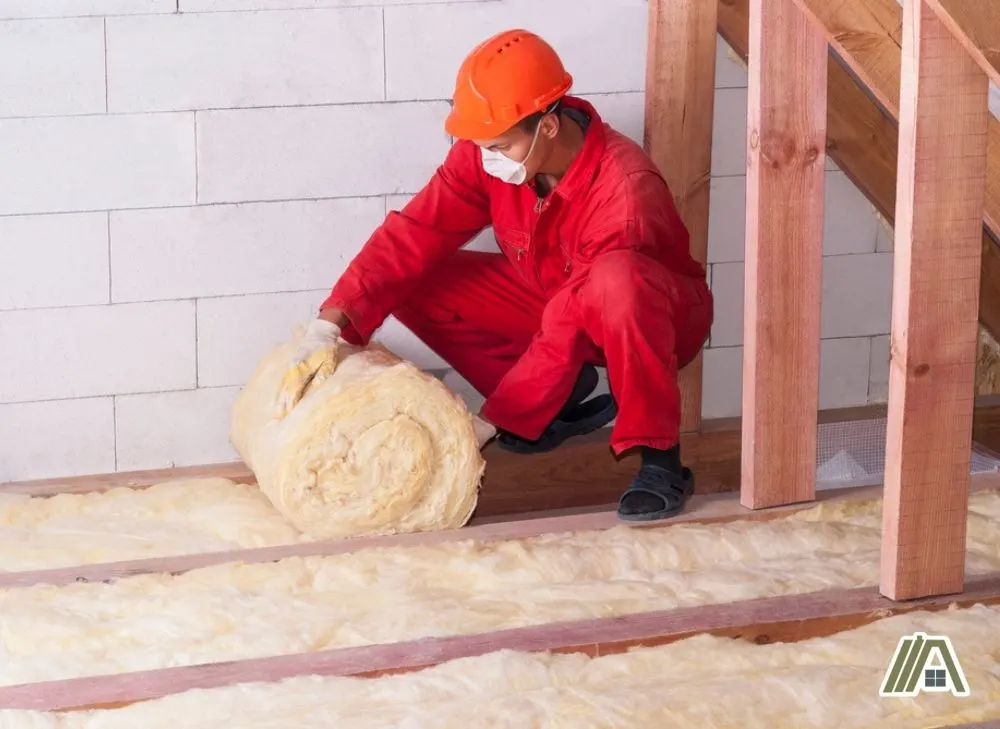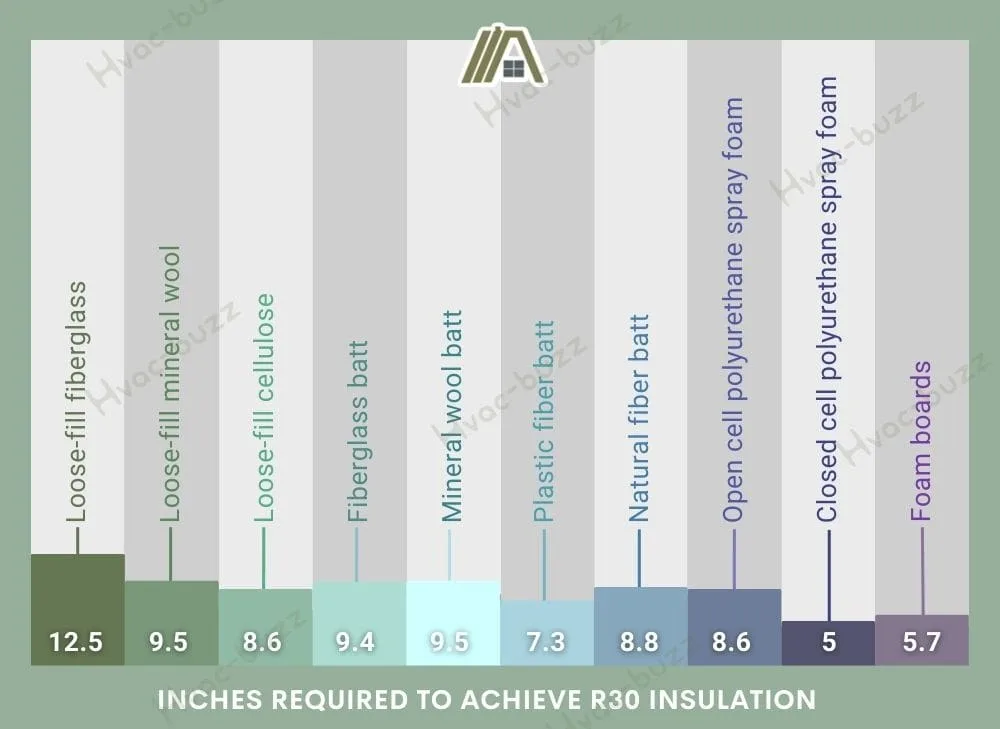R30 Insulation Thickness Take (Table For All Types)
R30 insulation is one of the more mutual insulation types that tin can be used too is ofttimes required in homes. As such, it is important to know as much as you tin when it comes to R30 insulation in addition to the requirements associated amongst it.
Here yous volition detect descriptions of R30 insulation inwards your domicile as well as also the regions that take the purpose of R30 insulation. Best of all is the slow-to-read table, which offers different insulation types and how thick they would necessitate to live to reach an R30 rating.

R30 insulation is ane of the virtually mutual ratings. It is used in ceilings inwards mild to warm climate zones together with inwards floors in addition to walls inward common cold climates. To achieve R30 alongside the thinnest layer, function unopen-cell spray foam (five"). Using liberate-fill up fiberglass would take the thickest layer (12.5").
R30 Insulation Is a Very Common Minimum Rating
Ceilings
R30 insulation is a lower rating that is ordinarily used in ceilings.
Table N1102.ane.iii of the International Residential Code (IRC) specifically describes when R30 insulation is required. In the example of ceilings, R30 insulation is required inwards zones 0 as well as 1. Hawaii is a zone one climate, equally are Puerto Rico too Guam.

The United States of America make non take whatever locations in zone 0.
Such areas take a lower insulation requirement because the temperatures are fairly consistent too mild to warm.
As such, not every bit much insulation is needed because no extreme amount of heat needs to live kept out. And, because it is not as common cold out, a peachy bargain of rut does non take to be kept in.
R30 insulation stops between 96% too 97% of the rut that would get through via conduction.
Walls
On the whole, walls require lower R-value ratings, then the climates where R30 is listed for purpose in walls (encounter Table N1102.ane.iii) are very different to where it is required inwards ceilings.
Zones iv-viii (marine zone four included) call for R30 insulation to live used inwards walls. U.S. of A. in these zones include Kentucky, Nevada, Ohio, Montana, Alaska, in addition to or so Alaskan boroughs are included inward zone eight.
These zones involve R30 insulation inwards their walls either because they are exposed to really cold climates constantly, or they take the potential to run into such temperatures.
In these areas, R30 is required and so that estrus is retained inwards the abode. In such zones it would live rare that the finish of R30 insulation inward the walls is to keep rut out, except inwards zone four, which runs along the northern portions of the southern USA.
Floors
Table N1102.one.three of the IRC describes when R30 insulation is required inwards floors besides. Again, R30 is quite a high rating when it comes to flooring insulation.
Zone five, marine iv, together with zone six are the only ones that postulate that R30 insulation is used inward the floors. U.S. in these zones include Nevada, parts of Washington country, parts of Oregon, and Montana.
It is important to banknote that zone iv (excluding marine zone 4) does not need R30 insulation inwards their floors. This would include a land like Kentucky.

These areas need R30 insulation in their floors because it is a picayune thicker too these zones are exposed to somewhat colder temperatures. And amongst having the insulation inwards the floors, the finish is to keep heat inward the desired areas of the abode.
Only Some Climate Zones Require R30
Zones 0, i, together with iv through eight (including marine zone four) inward about way call for the role of R30 insulation, whether ceilings, floors, or walls.
The entirely zones that don’t require R30 insulation in whatsoever facet are zones ii and iii. Some states that reside inward these zones are Alabama, nearly of Florida, together with virtually of Texas.
These areas don’t call for R30 at all because of the intense estrus they are usually encountering. As such, the insulation that is required is either thinner than R30 or thicker than R30.
Insulation thicker than R30 is required inward these climates (specifically in the ceiling) and so that temperature control (e.g., AC) can more than effectively live kept in the house. And insulation thinner than R30 is used so that heat within the house can more easily exit exterior of it.
R30 Insulation Thickness Guide: Table
| Insulation Type | Inherent R-value (per inch thickness) | Thickness to reach R30 | Best-selling selection |
| Loose-fill up fiberglass | ii.2-two.vii | ± 12.5″ | Owens corning 19 |
| Loose-fill mineral wool | three-three.iii | ± ix.5″ | R15 comfortbatt |
| Loose-fill up cellulose | 3.two-three.viii | ± 8.half dozen″ | Borate alone cellulose |
| Fiberglass batt (amazon link) | three.one-iii.four | ± nine.four″ | Knauf insulation EcoBatt |
| Mineral wool batt | 3-iii.three | ± 9.five″ | Havelock Wool |
| Plastic fiber batt | iii.8-iv.three | ± 7.3″ | JM Comfort Therm Fiberglass |
| Natural fiber batt | 3.iv | ± 8.viii″ | Owens Corning |
| Open prison cell polyurethane spray foam | three.v | ± 8.six″ | Loctite tite Foam |
| Closed jail cell polyurethane spray foam (amazon link) | five-vii | ± 5″ | Tiger foam |
| Foam boards | 3.six-eight | ± v.seven″ | SilveRboard |

Sources
https://www.tfofl.com/how-insulation-industrial plant
https://www.free energy.gov/energysaver/insulation
Komentar
Posting Komentar